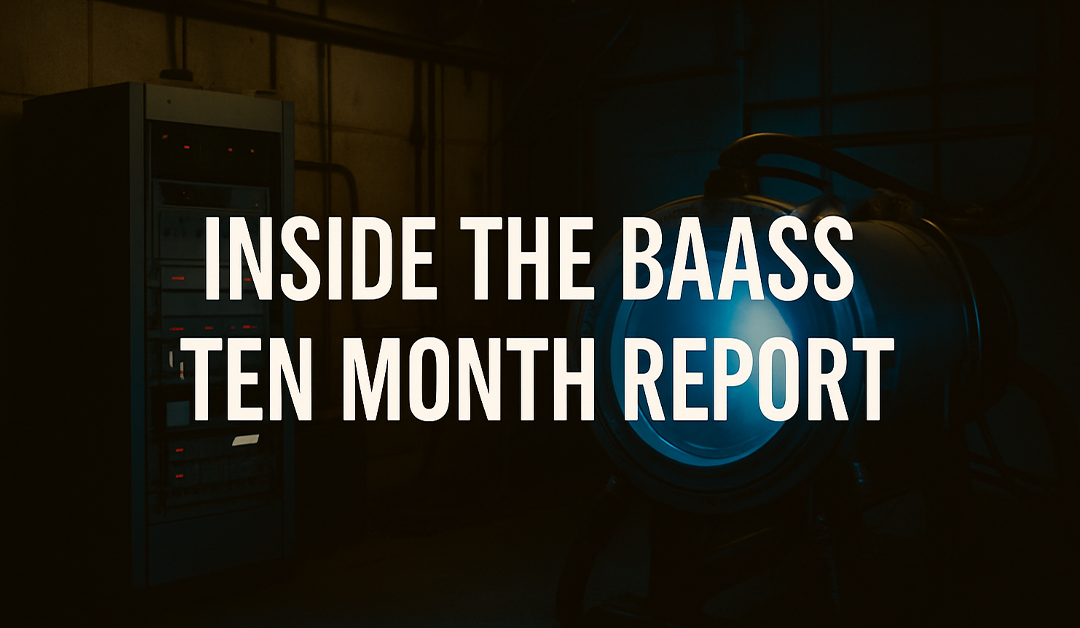A 2009 contractor report prepared by Bigelow Aerospace Advanced Space Studies (BAASS) for the U.S. Defense Intelligence Agency sheds rare light on the shadowy workings of the Pentagon’s advanced aerospace program known as AAWSAP.
This "Ten Month Report," obtained by researchers, reveals not only deep dives into propulsion and materials science-but also disturbing references to neurological interference, voice-to-skull technologies, non-human intelligences, and psychological operations.
This is an internal report for a defense-funded, government-aligned research program.
🧪 Engineering Reality: Propulsion, Materials, and Spacetime
A major focus of the BAASS report is the scientific analysis and replication of exotic technologies possibly derived from unidentified aerospace vehicles.
Specific areas of research included:
-
Inertial mass reduction systems
-
Zero-point energy extraction
-
Spacetime metric engineering
-
High-energy plasma propulsion
-
Isotope analysis of unusual materials
Teams were contracted for field testing and laboratory analysis of anomalous samples, with additional focus on reverse-engineering theoretical devices.
One section reads more like speculative physics than defense strategy-but it was underpinned by real federal dollars and actual laboratory studies.
👁️ Surveillance and the Ranch: Skinwalker as a Testbed
The report devotes significant attention to Skinwalker Ranch, which BAASS operated during the contract.
Unlike the pop culture mythology around it, the report describes Skinwalker as a site of repeated phenomena involving:
-
Physiological effects on personnel (including nausea, disorientation, and anxiety)
-
Technological interference with electronics and sensors
-
Sightings of aerial craft and entities
-
Environmental anomalies including light phenomena and radiation spikes
This wasn’t just observation-it was instrumentation. BAASS set up controlled studies, deploying biometric sensors on visitors and tracking psychological outcomes.
🧬 Human Cognitive Impact: From Telepathy to Trauma
One of the most extraordinary-and controversial-sections discusses neurological and cognitive interface research.
Topics include:
-
Synthetic telepathy and directed auditory energy ("voice-to-skull")
-
Remote viewing potential
-
Augmented cognition systems
-
Behavioral modification through electromagnetic influence
BAASS argues that the UAP phenomenon isn’t just about vehicles in the sky-it may be interacting with human consciousness itself.
They suggest that a new field of science is needed to understand these interactions, as current biology and physics models are insufficient.
It is presented in a structured, defense-context report.
🕵️ Civilian Tracking and Global Monitoring
The report further outlines intelligence-gathering efforts aimed at:
-
Tracking foreign government UAP programs
-
Profiling civilian experiencers and researchers
-
Analyzing global databases for UAP activity clusters
-
Working around FOIA constraints by outsourcing operations
Put simply, BAASS wasn’t just collecting physical data-it was monitoring people, narratives, and psychological responses.
🧾 What the Government Paid For
This document offers no definitive answers. Instead, it provides an expansive justification for continued research, framing the phenomenon as both a national security issue and an existential scientific mystery.
Yet what’s most notable is the degree to which the report crosses into areas rarely admitted by official channels:
-
Injury and trauma caused by UAP proximity
-
Mental influence and perception manipulation
-
Government-backed study of psychic or non-local cognition
This is not tabloid fodder. It’s a structured proposal prepared for the Defense Intelligence Agency.
🚨 The Real Front Line of Disclosure?
What makes the BAASS Ten Month Report so compelling is its unvarnished look at what the government was willing to fund and explore-quietly, and behind classified walls.
While public officials offer vague statements about UAPs and balloons, reports like this show the real work has been on human effects, consciousness interference, and exotic propulsion systems for years.
It’s not just about lights in the sky. It’s about what happens when we try to understand what’s behind them-and what it does to us.






